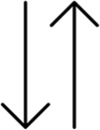Table 1.
Connecting personal heat exposure (PHE), which focuses on quantifying environmental heat load, with heat stress and strain to demonstrate the modeling goals within the current study. By leveraging the scope and definition of PHE to assess compensability under heat stress, we show how heightened PHE can lead to a rise in core temperature, dehydration, and cardiovascular strain over time.
| PHE Definition |
“The realized contact between a person and an indoor or outdoor environment that poses a risk of increases in body core temperature, perceived discomfort, or both.” (Kuras et al.[2] p. 2) *Note: Exposure itself implies intensity, duration, and frequency. |
 |
PHE is inherently linked to thermal stress and strain due to the coupling of exposure with duration and frequency to result in a meaningful exposure-response relationship.[9] |
| Heat Stress |
The net heat load on a person resulting from the combined thermal effects of the environment (air temperature, radiant temperature, humidity, and wind), metabolic heat production, and clothing.[68] Heat Stress→(Tair, H, Ws, R, P, M, Iclo)= PHE + M & Iclo |
| Heat Strain | Effects on body physiology that occur as a consequence of heat stress[13]; can lead to a rise in body temperature due to body heat storage, dehydration from non-replenished sweat losses, and cardiovascular strain, such as heart rate increases to maintain blood pressure (Vanos et al[6]).
Heat Strain→(Tair, H, Ws, R, P, M, Iclo, Tsk, SR) = Heat stress + Tsk, , & SR |
temperature (Tair), humidity (H), wind speed (), radiation (R), atmospheric pressure (P), metabolic rate (M), clothing Insolation (), skin temperature , skin wettedness (), and sweat rate (SR).
